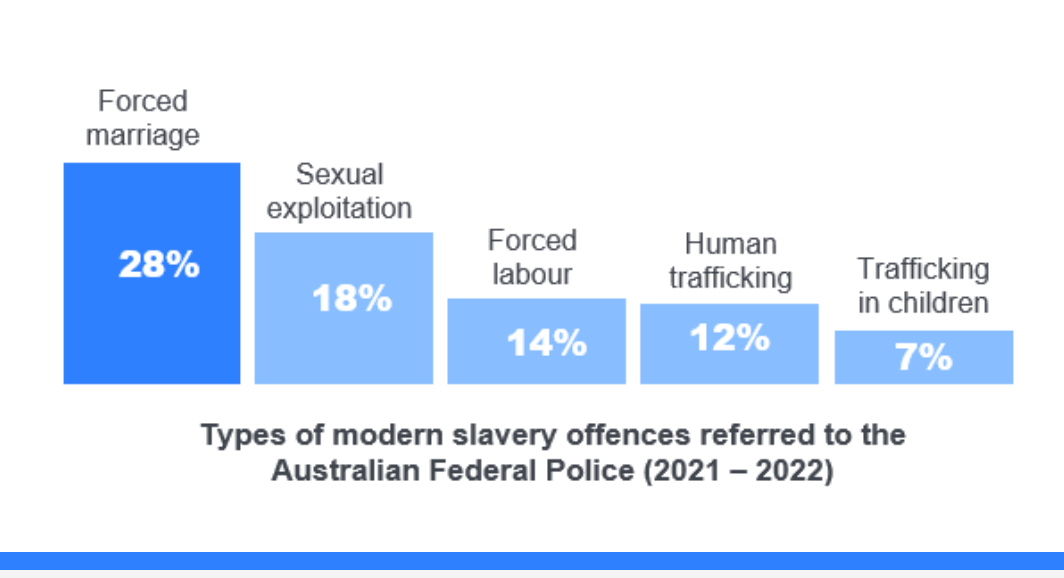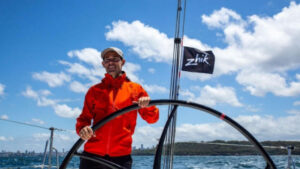- The revoke of Linx’s licence brings modern slavery discussions to the fore
- What is modern slavery, and how is it measured?
- Stockhead reached out to Unchained Solutions’ founder, Dr. Stephen Morse
Last week, the Federal Government revoked the licence of Tasmanian labour hire company Linx Employment after a sustained union campaign.
The Australian Workers Union (AWU) claimed that Linx had mistreated Pacific Islanders hired to work on Queensland farms, leaving them to work without shifts and forcing them into homelessness without money to return home.
Some workers, who came to Queensland’s Bundaberg region on seasonal visas under the federal government’s labour mobility scheme, also claimed they had been without employment and income for months.
“Let me be clear, if you treat workers like slaves, the AWU is coming after you,” said AWU National Secretary, Paul Farrow.
Workers have told stories of Linx management making excessive deductions from their pay for substandard accommodation.
Linx also allegedly withheld workers’ visas, refused to provide payslips, and resorted to bullying and threats to send workers home when concerns were raised.
Farrow said what Linx did amounts to modern slavery.
“If you go to the Australian Federal Police website and look at the checklist for modern slavery, you will find these workers tick a lot of the boxes.”
Over 40,000 cases of modern slavery in Australia
The Linx case highlights the growing problem of modern slavery in the country.
Data show the number of modern slavery cases in Australia have increased from 15,000 in 2018 to more than 40,000 in 2023 – a rather shocking stat given that Australian society prides itself on being “one and free”.
A research by Melbourne University suggests that Aussie consumers may be unknowingly complicit in the perpetuation of modern slavery through consumption choices.
“Consumers feed exploitation through their spending, typically prioritising factors – like price, convenience and social status – in their consumption choices.
“In doing so, Australian consumers – consciously or not – create a demand for products and services that are produced by people who work under conditions of modern slavery,” said the report.
Victims of modern slavery are often involved in picking, producing and processing many of the products that we consume.
Many also work in service industries from construction and hospitality, to illegal sex work as well as in other hidden parts of the economy.

Interview with Unchained Solutions’ Dr Stephen Morse
To gain more understanding of the issues, Stockhead reached out to Dr Stephen Morse, CEO of Unchained Solutions based in Sydney’s Macquarie Park.
Unchained is a professional services firm that focuses on working with organisations to address the risk of modern slavery in both their operations and supply chains.
The company works across multiple sectors – providing strategy analysis, training documents and research – for both small and large corporations to make sure they comply with the Commonwealth Modern Slavery Act and the NSW Modern Slavery Act.

What exactly is modern slavery?
“Modern slavery is a complex issue, and it’s an issue that sits on a spectrum of a range of human rights violations,” Dr Morse told Stockhead.
“From a human rights perspective, slavery is the removal or severe restriction of a person’s voice, choice and movement – and as such it’s really at the pointy end of exploitation.
“In Australia, modern slavery is used as a legislative term to cover a range of human rights violations such as forced labor, debt bondage, domestic servitude, extreme forms of child labor, force marriage and trafficking.
“But in the labour force, there’s all sorts of human rights violations.
“This may include wage theft where someone is being paid less than what they should be, extremely long working hours, lack of a contract, coercion, threats and all sorts of psychological abuses.
“Those are some indicators that point to modern slavery.”
Which sectors are vulnerable to modern slavery?
“In Australia, there is a lot of anecdotal information here, but a greater and broader research needs to occur,” Dr Morse said.
“The Global Slavery Index, which is published by Walk Free, estimates that there is is around 41,000 modern slavery cases in Australia, which is a higher number than eight years ago.
“One of the difficulties of addressing or identifying modern slavery risk is actually getting that concrete information.
“We know there are risks, for example in agriculture, and particularly when it comes to people coming to Australia for the harvest and fruit picking.
“There have been noted issues there around wage theft, lack of contracts, and poor facilities where people are being employed.
“That’s also being experienced by people who come say, from the United Kingdom on a student visa, where they might be working on a farm for a period of time in order to extend their visas.
“Sectors like construction, retail services, salons, car washes or cleaning services are some of the most vulnerable to modern slavery.”
How do you identify cases of modern slavery?
“An example of the kind of work we’ve done for our client is to help them map out their suppliers, and through that process, we assign a risk profile to each of those suppliers,” said Dr Morse.
“Once we’ve ascertained the risk profile, we then engage with those suppliers through a self assessment questionnaire process.
“So that’s one of the methods that’s applied, and it’s a very a common widespread tool.
“There’s obviously variance in terms of how effective that process is. It’s not 100%, but it’s a starting point.
“In general, it’s not easy to identify a case of modern slavery, and for many organisations, they really need to think through how they’re going to drill through the supply chain – to the source of manufacturing, harvesting or extraction for example – to understand the context.
“And that’s the long term engagement.”
How does modern slavery fit into ESG?
“Modern slavery sits within the ‘S’ or social zone in the ESG context, but it doesn’t sit there in isolation,” explained Dr Morse.
“There are touch points with other human rights issues around gender equality issues, or the treatment of First Nations Australians,’ for example.
“It could also touch with environmental concerns, for example around facilities that are not well maintained where there is poor waste management or water management. In these instances, people are actually being exploited.
“And there’s also issues around governance as well, in terms of how those operations are being managed.
“So in terms of the ESG landscape, which is a huge landscape, modern slavery sits in there and has intersections with the different ESG issues.”
Do customers and investors care?
“When people are asked, do you want slavery in your supply of goods or services, of course, the answer is no,” Dr Morse said.
“But that’s a completely different question to what would happen at the point of sale.
“Are consumers actually going to be intentional and strategic in doing due diligence to prove the goods and services they’re buying are slave-free?
“In terms of investors, we know that over the last few years there’s been a larger allocation of investment funds being put aside for ventures that address a certain number of ESG indicators.
“So in that sense, I think there’s definitely already an understanding there in terms of investment.”
Now read: Does Australia have a slavery problem? We ask Ndevr Environmental’s Brian Kraft
Read MoreESG











